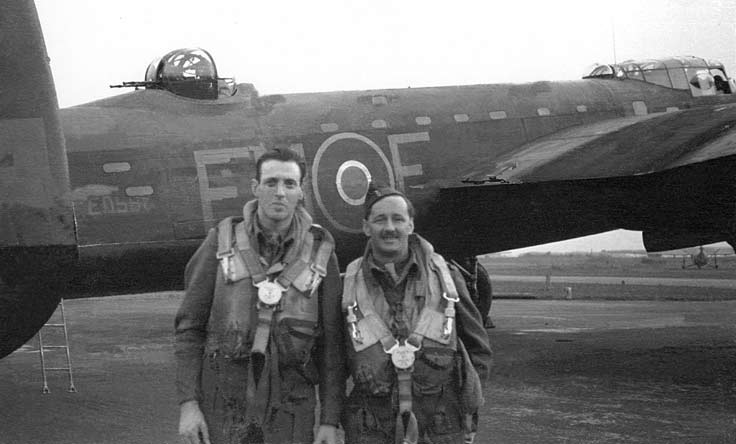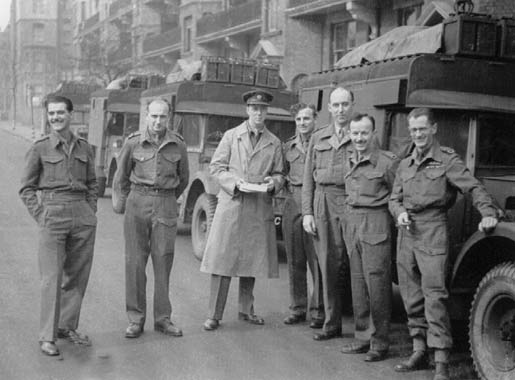
A Leica II, similar to the one that Reg Pidsley used
for most of his war-time photography.

Reg Pidsley (left) with Wynford Vaughan Thomas in front of Lancaster F for Freddie of 207 Squadron prior to flying on a Berlin raid, 3rd September 1943. Reg recorded the voices of the crew during the flight. He later commented that when the bombs were released, "it was like going up in a lift" and the cutting head dug into the disc.
Robert Smith provides a personal memory of Reg
Other articles by Robert Smith
"I well remember a record, with no sleeve to protect it, standing on the shelf above Reg's bench and half-way across the playing surface was a small spot of silver paint. At this time well before the advent of CDs, such records were still very common (BH was still full of TD/7s !) so such an artefact was not particularly unusual in a workshop.
"It was during a conversation one day, between modifying Leevers-Rich tape machines and repairing GPA/4s, that in response to my curiosity about the silver spot he related how he had, indeed, been an engineer during the war. As far as I recall he said that it was on one of the '1000 bomber raids' over Germany with Wynford Vaughan Thomas as War Correspondent that he had first to put the uncut disc inside his flying jacket to warm it up before recording WVT's report on his portable recorder. The temperature inside the bombers flying at their operational height was very low rendering the disc's coating too brittle to cut.
"In the middle of the recording a massive bomb was released from the aircraft in which they were working and the aircraft rose, as mentioned above, 'like a lift' with the result that the stylus dug a deep hole into the disc! The silver paint, which looked like aluminium paint (or perhaps it was a special compound developed for the industry), was the repair which Reg had effected to allow the piece to be broadcast.
"I have often wondered what happened to the disc as it struck me even then that it ought to be kept more carefully than perched above his bench! Reg was a very kind man and I remember him with affection."

Included in this shot are engineers Sydney Gore (2nd from left), Wilfred Lindop (centre) and D. H. Farley (far right).
If you can identify any other people in this, or any other shots in this section, please get in touch using the link at the bottom of this page.

